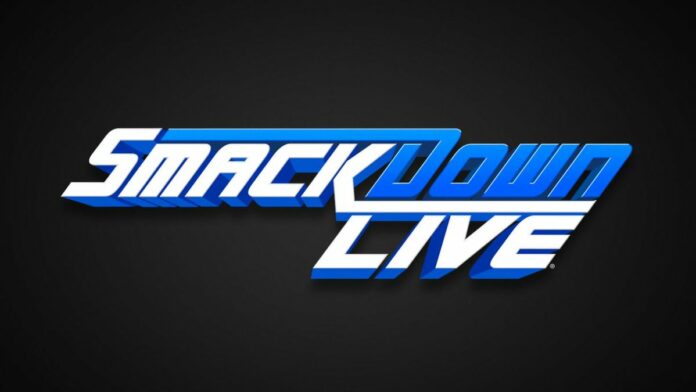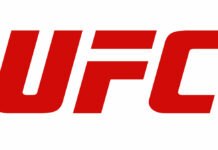
In just a few weeks, Smackdown moves to Friday nights on Fox, one of the main pieces of WWE’s mega TV deal that will bring the company a total of $2.5 billion during the duration of the five-year contract. The Friday night portion brings the organization a billion dollars for the blue brand, while USA forked over nearly $1.5 billion to retain the flagship Raw program. These contracts were finalized several months ago and boosted the stock price, a top priority for WWE brass. However, ratings have slipped in recent months and face competition from the football season so the pressure is on the sports entertainment empire to deliver for its shareholders.
As a way to generate a spark and kickoff a new era for the promotion, there will be yet another draft in October to shuffle talent around to theoretically set up new feuds for television. There are many aspects to this story, both from the business side and the on-screen presentation. Granted, USA paid more money to keep Raw on their network, but considering there’s a third hour to generate ad revenue, it’s understandable that aside from being the flagship show, the price tag for Monday night would bring WWE a bigger deal. That being said, the fact that Fox paid a billion dollars for the TV rights to Smackdown more or less puts it on an equal level with Raw in terms of importance for the business side of the company. One of the problems is that Smackdown was only created to rival Thunder during the peak of the wrestling wars of the late 90s, and post-WCW, the blue brand was almost always used as the secondary show. Obviously, Raw had more history to it, but even the content and distribution of Smackdown throughout the years framed it as the B-show of WWE programming.
That must change if management is going to justify the major cash they will get for broadcast rights, which is why Brock Lesnar will probably win the WWE title when he challenges Kofi Kingston. It’s no coincidence that Brock is scheduled for his first TV match since he returned to the company when the move is made to Fox. In truth, with that type of cash on the line, it makes sense to put it to use and pay Brock’s per match price because if the show delivers consistent ratings on Fox then it helps the stock price. However, the ability to draw big numbers on a broadcast station, especially on a Friday night is no easy task.
The bottom line is, much of this deal was based on the perception of WWE’s business prospects, not the success of the content of the show. Management signed Ronda Rousey for her first major sports venture since she retired from mixed martial arts and were able to use their deal with ESPN to market to a main stream audience. There was also the very controversial Saudi Arabia deal that saw the organization be used as propaganda for the Saudi government. Obviously, there were ethical questions about the entire situation, but one way or another, it generated an estimated $40-50 million per show for the company. From a business perspective, that’s a major revenue stream for a deal that is supposed to continue for the next decade.
As far a revenue goes, the past few years of WWE have been very successful, as they generated record-setting profits through the stock, TV rights, and expanded distribution. At the same time, the actual on-screen product has garnered sluggish ratings and a stale presentation. In many ways, these new TV contracts put the company in a tough spot because they will have to draw solid numbers or their successful status could be exposed as a temporary smoke screen that was designed to boost the stock instead of progress the company.
That’s not to say WWE management can’t deliver for Fox, considering that Vince McMahon has bet right a lot more often than he has bet wrong throughout his time as the kingpin of the sports entertainment empire. Keep in mind, for as great as some of the other groups were throughout history, McMahon was the last man standing in the American wrestling market. Other promoters were either too narrow-minded and went out of business or knew when to sale to cash-in before the territory system faded in favor of a national promotion. All that said, nothing about the current product says that it will guarantee that a wider audience will be drawn to it.
More specifically, I don’t think another draft or exclusive brands will spark viewership on Fox. I’ve said it several times before, but it must be said again here, I just don’t think the brand extension is a concept that will connect with the general public. In some respects, the concept of exclusive talent and different champions for different shows is too convoluted for casual viewers. Plus, there was already a draft, a shake up, and the wild card rule this year. None of that drew bigger numbers and if anything, further diluted the product. The point being, the reasons for the lack of numbers are much more simplistic than that. In my opinion, the current WWE philosophy of the direction that carters to the corporate agenda instead of fan demand erodes the casual viewership, reducing much of the audience to the diehard demographic that watch more out of habit than anything else. Part of that corporate agenda is to push the brand as the draw instead of specific stars, which creates a ceiling as to how over any particular competitor can get in the organization. It gives the company leverage because if someone gets injured, they can simply plug another athlete into that spot, but when the pieces of the puzzle become interchangeable, there’s a certain level of unavoidable mediocrity that goes along with it. Speaking of mediocrity, the 50/50 booking that attempts to keep everyone a star ultimately brings less star power to the brand. It might sound harsh, but some performers should have the role of a mid-carder that makes the stars look good, and there’s really nothing wrong with that. Without a line-up of legitimate money-drawing stars, there’s a lack of depth on the roster in terms of star power and the ability to boost numbers. Aside from maybe Brock Lesnar, who makes a noticeable difference in the numbers? The reason for that is management made it a priority to present Brock as something more than just another wrestler on the roster.
Ironically, at a time when the company lacks legitimate stars, they have some of the best in-ring talent under contract in the history of the promotion so the athletes are already there. That is the reason that the presentation of those competitors is such a key factor in the perception of them as stars and the overall product. It might not be realistic to produce a solid three-hour show on a continuous basis, but WWE brass took the cash for it so now that’s the task they have for the product. With the recent addition of NXT to the USA network, it’s very possible that there’s just too many hours of content to expect a causal viewer to watch, but that’s the programming that the WWE has set up ahead of these new TV deals. Obviously, WWE will stack the shows for the kickoff, but this move to Fox or another draft doesn’t automatically translate to better ratings. The fundamental flaws in the “brand as the draw” approach are something that could become more apparent as the pressure to deliver for the major TV rights continues throughout the duration of the contract. I’m not claiming to know the answers to this scenario, but the paint-by-numbers ideology to make stars has yielded mixed results in recent years. The WWE should have intriguing storylines that progress the characters if they want to draw viewers on a regular basis on Friday nights. Hopefully, this transition to Smackdown will be a chance for a shift in direction because its also very possible that the platform of broadcast television could expose many of the problems that were a regular discussion in the past few years.
What do you think? Comment below with your thoughts, opinions, feedback and anything else that was raised.
Until next week
-Jim LaMotta
E mail [email protected] | You can follow me on Twitter @jimlamotta







